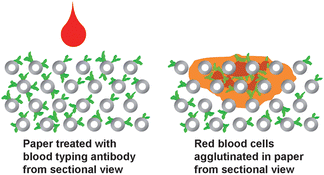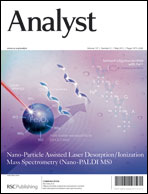Mechanisms of red blood cells agglutination in antibody-treated paper
Abstract
Recent reports on using bio-active paper and bio-active thread to determine human blood type have shown a tremendous potential of using these low-cost materials to build bio-sensors for blood diagnosis. In this work we focus on understanding the mechanisms of red blood cell agglutination in the antibody-loaded paper. We semi-quantitatively evaluate the percentage of antibody molecules that are adsorbed on cellulose fibres and can potentially immobilize red blood cells on the fibre surface, and the percentage of the molecules that can desorb from the cellulose fibre surface into the blood sample and cause haemagglutination reaction in the bulk of a blood sample. Our results show that 34 to 42% of antibody molecules in the papers treated with commercial blood grouping antibodies can desorb from the fibre surface. When specific antibody molecules are released into the blood sample via desorption, haemagglutination reaction occurs in the blood sample. The reaction bridges the red cells in the blood sample bulk to the layer of red cells immobilized on the fibre surface by the adsorbed antibody molecules. The desorbed antibody also causes agglutinated lumps of red blood cells to form. These lumps cannot pass through the pores of the filter paper. The immobilization and


 Please wait while we load your content...
Please wait while we load your content...